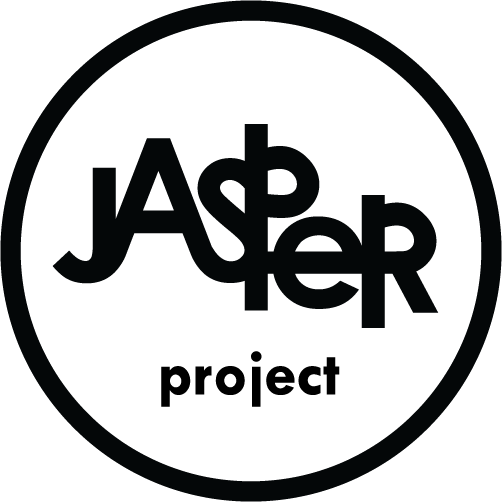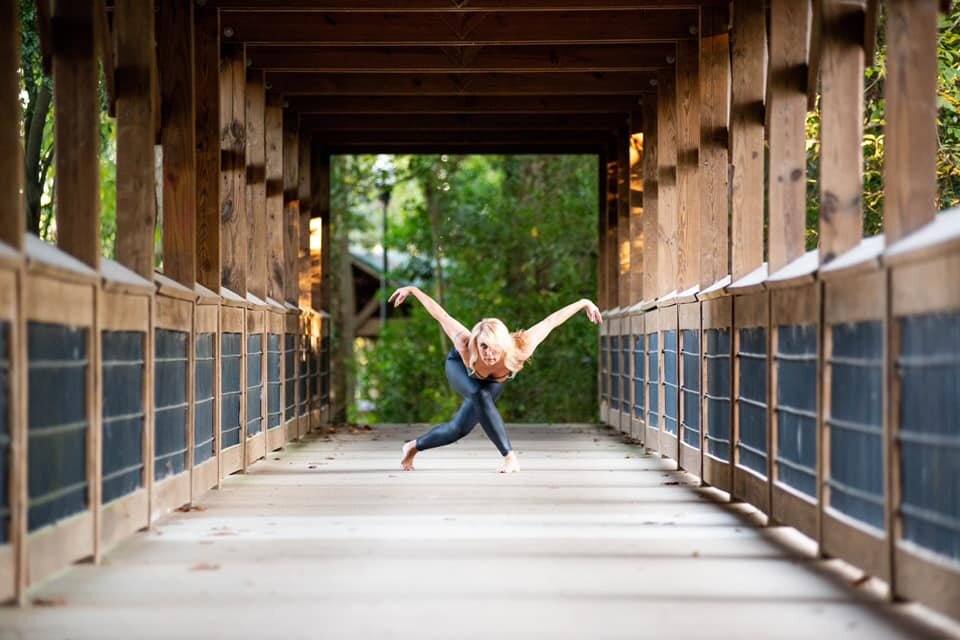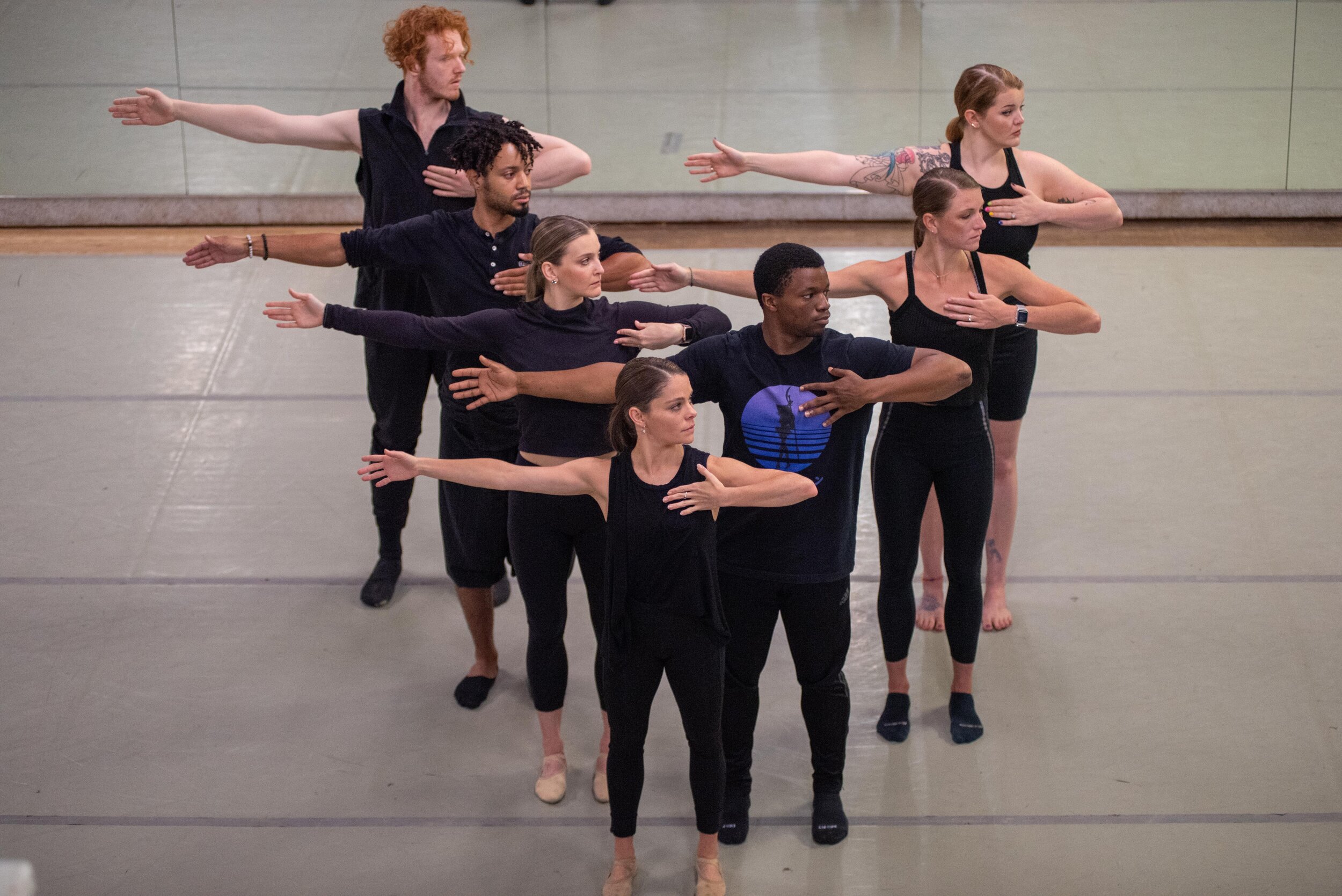By Cindi Boiter - Editor, Jasper Magazine
Chad accepting the SC Theatre Association’s Founders Award in 2018
By now, many if not most of the area’s artists and arts lovers have learned that Chad Henderson has left his post as executive director of Trustus Theatre for new stage sets and designs and new characters to coax into life. (Full disclosure: Chad is my son-in-law. That said, I have been a massive fan and supporter of Trustus Theatre for decades and have served on the board of directors under two artistic directors, including co-founder Jim Thigpen. It is from the perspective of someone who prizes Trustus and the role it plays in the greater arts community that I write this piece.)
Like pretty much everyone, I am sad to see Chad go though I firmly believe it is a smart thing for him to do.
It can be argued that Chad has more talent and potential for creative possibility than could continue to healthily grow in that small but fertile space on Lady Street.
I get that.
In the current structure of most non-profit arts organizations one can only grow as great as one’s board of directors is comfortable with. It doesn’t matter if you’re an artist or an ED, in the non-profit world we all labor under a collection of thumbs that could fall at any time. It’s easy to imagine a creative spirit straining against the well-meaning confines of a rotating organization of seat-fillers to fully realize that spirit’s potential to break some windows and rattle some doors.
Kudos to Chad for leaving Trustus before this became the case.
As a theatre autodidact and someone who has been lucky to travel a bit and see my share of theatre throughout the US and Europe, I can honestly say that some of the best performances I have ever seen have been on the stage at Trustus Theatre.
I’m reminded of Tarell Alvin McCraney’s Brother/Sister plays, specifically In the Red and Brown Water, which Chad directed in 2015 featuring Avery Bateman and a cast-iron solid cast that included actors like Katrina Blanding and Annette Dees Grievous whose voices I couldn’t get out of my head for weeks after seeing it.
The next year, Chad directed part two of McCraney’s trilogy, The Brothers Size, with Jabar Hankins, Bakari Lebby, and Leven Jackson. I remember walking into the Side Door Theatre and being welcomed by the sounds of cicadas and seeing twinkling lights—lightening bugs—throughout the air. I saw that show three times just so I could watch Jabar’s face and hear his voice crack with love and pain.
I am also reminded of seeing Paul Kaufmann in the one-man play, I Am My Own Wife, directed by Ellen Schlaefer in the Side Door in 2012, after having seen Jefferson Mays in the role at the Lyceum on Broadway. I liked Paul better.
Spring Awakening, Next to Normal, Avenue Q – the list goes on. All of these plays left me, time and again, in awe that you could see this caliber of performance in a grubby little theatre down the street from wherever you are in town.
No, Chad didn’t direct all the paradigm shifting plays we’ve seen at Trustus. Though it’s no coincidence that many of the plays he scheduled or directed were in keeping with the kind of avant-garde theatrical art that Jim and Kay Thigpen envisioned producing when they started the theatre.
So, as pleased as I am to see Chad move on to the next stage, wherever he finds it, I worry about Trustus.
Don’t get me wrong, I have immense faith in Dewey Scott-Wiley as she steps in as interim director. Dewey is smart, sophisticated, talented, and responsible. There is no one else in town who could do the job she will be doing as well as she will do it.
And that’s the problem. It’s doubtful that Dewey would take the helm of running Trustus permanently. Dewey already has a job and a life.
And make no mistake, whoever takes over running Trustus will not just be taking on a job. They will also be taking on a life. There’s not enough support staff in the world, and there are certainly not enough numbers before the decimal point in the ED’s salary to entice most people who are good enough to do the job to actually do it long-term.
Because running a theatre like Trustus is a lot like raising a child. For Jim and Kay, Trustus was their child. For Chad, the theatre was a family member he was both emotionally, intellectually, and creatively connected to in that they grew alongside each other for over 14 years. Trustus made Chad the man he is today, and Chad certainly did his part in making Trustus the theatre it is.
I worry that kind of relationship was what kept Trustus going even after Jim and Kay left. And I worry about what will happen in the absence of that kind of relationship.
Trustus has built an enviable reputation among its organizational peers in South Carolina, sharing equity actors, directors, and innovations with other top theatrical minds. Will those relationships be maintained and nurtured? Will they be respected for how they elevate the art form throughout the state? Or will we just worry about our small circles of friends and supporters because that’s the easiest thing to do?
When the board puts pressure on the permanent replacement staff to pay the bills will whoever is behind the wheel resort to producing hokey Southern schlep just to fill the seats? Will they simply recycle previously successful productions and, if so, how many times will theatre audiences pay to see the same show again, and again, and again? God knows you cannot grow audiences that way!
Or worse, will they slump to the lowest of lows and cast local celebrities, moneyed patrons, or God-forbid, CHILDREN in roles just so the “actors’” doting fans and relatives will buy tickets and put butts in seats?
I mean, I have nothing against community theatre. In fact, I love community theatre. But Columbia and its bedroom communities have community theatre out the wazoo, and that's fabulous. Everybody needs a stage at some point, but the stage doesn't need every body. (I’m reminded of a local production of Cats I once saw …)
Trustus has set the standard for professional theatre in the area and believe me, there is as much a difference between professional theatre and community theatre as there is between professional dance and dance school recitals.
I worry.
As proud and happy for Chad as I am, I sincerely hope Trustus Theatre will continue to be the touchstone for avant-garde artistic experiences in the region that it has been since 1985. As a literary artist and an arts afficionado myself, I need this.
To the powers that be, a few requests:
Please respect the culture of the theatre that Jim, Kay, Dewey, Larry, Chad, and the whole Trustus Family has put so much of themselves into creating. It may not be perfect, but it is fertile, it is forgiving, and it accepts people for who they are and what they bring to the table, recognizing that genius is seldom faultless.
Please be careful filling this position, but don’t be too safe.
Please remember there are many ways to interpret integrity and dedication and the best person for the job may not be as sweet-talking or as clean behind their ears as you might like. It takes a lot of bodily fluids to maintain and grow an artistic brand like Trustus.
Trustus had Chad’s heart and he was as devoted to its legacy as a best big brother could be. I wouldn’t want to be in the shoes of the people who have to try to replace him.
But good luck.
Chad Henderson and Trustus Co-Founder Kay Thigpen





















































